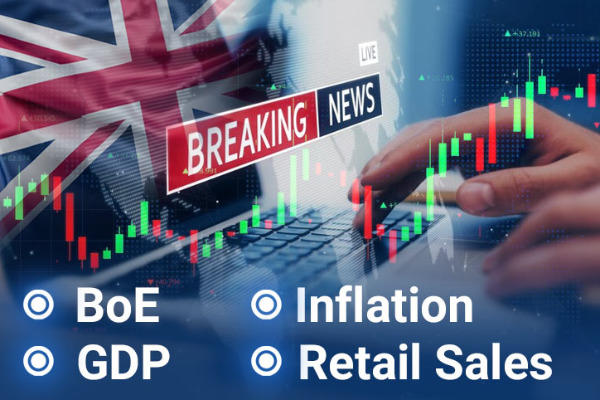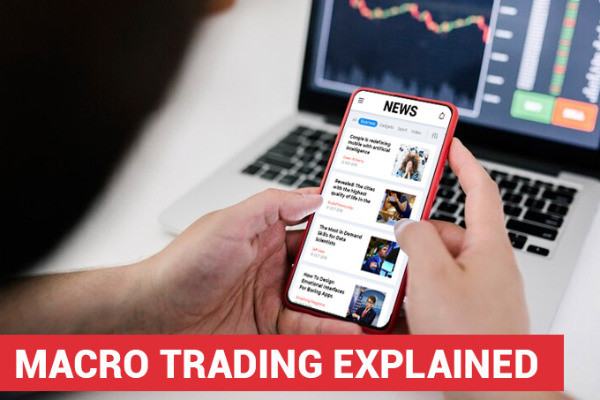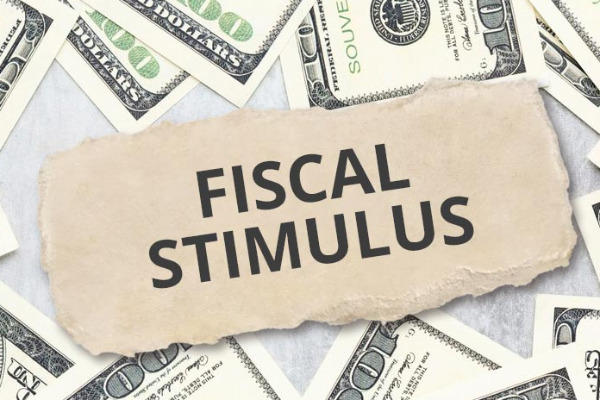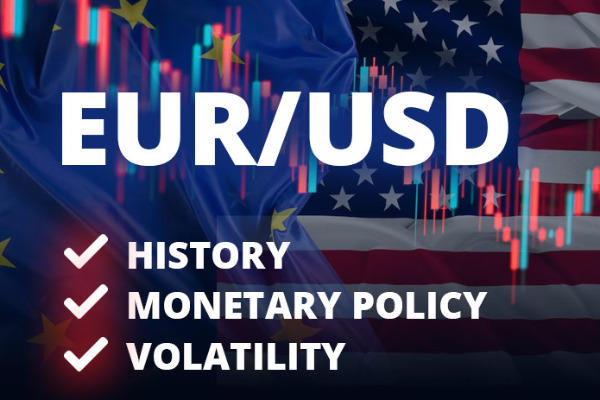Trading the headlines is often seen as a great way to get high returns and improve long-term portfolios. But, is it really worth the risk?
News and data releases are probably the top price drivers in the financial market. This is particularly visible in the forex market, which is highly affected by not only US economic data but also news from all around the world. Some forex traders see this as an opportunity to grab higher returns, while others prefer to do the complete opposite and stay away from the market due to the unpredictable, volatile condition of the prices.
It can be said that trading around headlines is worth the risk only if you really have a good strategy and are experienced to face extreme volatility. Otherwise, it would be better to wait until the market settles down from the headlines' impact.

What You Should Know About Trading the Headlines
Whether you like it or not, the importance of news in financial markets cannot be overstated. The market can be heavily reactive to news developments, especially during the moment leading up to the announcement and the moment right after the announcement. This causes the market to be highly volatile and prices to move very quickly, which can be both good and bad for traders.
One thing to note is that during news announcements, usually there is a lot of excitement, anticipation, and anxiety. This can add an emotional factor to trading and can be harmful to those who can't control their emotions. They might forget to put safety nets like stop losses and end up losing a lot without realizing what's really happening. Others might just gamble their way in and join the herd without any plan at all. These are the problems that not all traders can handle.
Some professional traders can do well during news releases simply because they know what they're doing. They have a solid strategy and are able to make an informed assumption about the potential direction of the market and the impact of the news. In other words, they know the right time to get in and when to get out. They may have spent years to finally develop such skills in hectic market action.
See Also:
Types of Headlines to Look Out For
Breaking news happens all the time. Every day, there are hundreds of new headlines, data releases, and blog posts displayed all over the internet. However, not all of them are significant enough to affect the market greatly. This is why you need to be able to separate the news that actually matters from the rest. In the forex market, for instance, important news releases may only appear once or twice a week. So, in order to make successful trades, you should know what news to look forward to.
Essentially, there are two types of news that may affect the market:
Unexpected News
This type refers to sudden or unforeseen announcements, such as natural disasters, pandemics, terrorist attacks, or a certain economic development. For instance, the devastating earthquake that happened in Japan a while ago caused the USD/JPY price to shoot up instantly after the news broke. Such news is certainly unpredictable, but it can be a huge advantage if you can respond to it well. The key is to understand the context of the phenomena and figure out what the market is focusing on.
Moreover, when trading unexpected news, you need to be prepared of any possibilities. As a trader, your job is to keep the emotion in check and always look for confirmation signals. Volatility may present opportunities, but it can also be a dangerous sea to unprepared traders. But above all, the most important thing is to be cautious. Trading unexpected news is very risky, so don't risk more than you can afford and be extra wary of knee-jerk market reactions.
Recurring News
On the other side of the coin, there are announcements that occur regularly, such as quarterly reports, economic statistics releases, job reports, or bank centrals' policy announcements. These days you can easily check all upcoming events by looking at an economic calendar.
One of the strategies that you can use when trading recurring news is called trading spikes. For example, news releases such as Non-Farm Payrolls (NFP) may send shockwaves to the technical charts. This is why many traders tend to wait for the dust to settle and trade only after they figure out the real effect of the release. What you need to do is look at the range in which the currency is trading at the present moment, then place two pending orders (a Buy Stop and a Sell Stop, 20 pips above and below the current price) about 5 minutes before the release. Place Stop Loss and Take Profit orders 40 pips from the current price.
If the outcome is positive, then you can close the deal with profit. If you're lucky, you can make money from both sides (the price change directon and go higher/lower before falling/rising). If the outcome is negative, the price will move in both directions but fail to reach both your take profits. But if you have a Stop, your losses will be limited.
Tips on News Trading
Do's
- Always check the economic calendar before the trading day. This will help you get information on upcoming events and get ready for price swings.
- Remove unnecessary data from the calendar. Clean your calendar by removing the countries that you don't follow and economic data that does not have huge impacts on your trades.
- Be the first people to receive the news. The calendar gives you information on what to expect, but in reality, some events are completely unexpected, like the occurrence of a major earthquake. Thus, you also need to check other sources such as Twitter or local news.
Don'ts
- Ignoring alerts. Alerts on important news releases are useful for trading around headlines so you don't miss any opportunities.
- Not preparing any strategy beforehand. Don't enter the market completely empty-handed to avoid making poor decisions. Determine your entry and exit points in advance and stick to the plan until the end.
- Trading out of plan. Major price swings and high volatility may tempt you to make impulsive decisions but don't fall for it. The market might still move against you.
- Trading right after the news release. Wait for the release of the chosen news and then dive into the market according to plan. Don't rush anything and wait for strong signals and their confirmation. Also, remember that the market's reaction usually lasts about 30 minutes up to 2 hours.
The Bottom Line
At the end of the day, we can conclude that big economic news may carry different meanings and profitability to each trader. It is possible to make successful trades during headlines, but it's not necessarily easy to do so, even for professionals. This means you need to be able to find key events that have a high chance to impact the markets.
Researching daily news events might take time, but there are ways to get the data efficiently. For example, you can take advantage of brokers' features that are specially provided to keep traders updated with the news. At the end of the day, you'll need a ton of practice and knowledge to master news trading. Like any trading strategy, your success depends on your preparation. You have to make sure that you are prepared before entering the market. If you stick to that principle and never give up, you'll soon find that news trading can be very rewarding once you get the hang of it.

 Dedicated FREE FOREX VPS
Dedicated FREE FOREX VPS Free FOREX Virtual Private Server
Free FOREX Virtual Private Server MT4 Demo Contest, Get $500
MT4 Demo Contest, Get $500 Sign Up for an Account, Claim 60% Deposit Bonus
Sign Up for an Account, Claim 60% Deposit Bonus Free MT4/MT5 VPS 2024
Free MT4/MT5 VPS 2024 Send E-mail and Get Free Merchandise
Send E-mail and Get Free Merchandise $1K Refer a Friend Bonus for Pepperstone Pro clients
$1K Refer a Friend Bonus for Pepperstone Pro clients Maximize Your Earnings with 100% Deposit bonus
Maximize Your Earnings with 100% Deposit bonus Trade to Win, $5,000 Monthly Demo Contest
Trade to Win, $5,000 Monthly Demo Contest Claim 30% + 15% Deposit Bonus from LiteFinance
Claim 30% + 15% Deposit Bonus from LiteFinance








10 Comments
Daniel
Dec 18 2022
Joshua
Dec 18 2022
News trading provides an attractive opportunity for traders, due to the frequency of releases and the resulting volatility. But yes, there must be a risk. Such as high fluctuations caused by news that is often directionless. The market may start flying in one direction, but return in another. Sometimes it's a headache to determine the right direction. We, as traders, must also have a strategy rather than getting caught up in risk.Here's an example....When predicting economic data, there are some clues in previous economic news releases. For example, in estimating the US jobs data you can use the employment component of the PMI report. If the employment component of all three reports has increased from the previous month, it indicates that the number of new jobs created has also increased.
Veneziano
Dec 22 2022
What is the best strategy to trade the news?
Claravia
Jan 6 2023
Verdie
Dec 30 2022
Is news trading suitable for beginners?
Randy Vesperio
Jan 10 2023
- News trading requires a thorough understanding of the market, as well as the ability to analyze and interpret news and data.
- Consider the risk, because the market can move very quickly in response to news events
- it can be difficult for beginners to know how to effectively manage their trades in such volatile conditions.
If you are a beginner and interested in news trading, it is important to take the time to learn about the market and develop your skills and knowledge before attempting to trade based on news events. In addition, is also a good idea to practice your skills in a risk-free environment, such as a demo account, before moving on to live trading. You can read it here:Huberto
Jan 10 2023
When are news keys releases?
Sandra Hernandez
Jan 10 2023
- Interest rate decisions by central bank: typically announced at scheduled meetings of the central bank's policy-making committee, which are held at regular intervals throughout the year.
- Gross domestic product (GDP) data: typically released on a quarterly basis by national governments and statistical agencies. GDP data is an important indicator of a country's economic health.
- Unemployment data: typically released on a monthly basis by national governments and statistical agencies.
- Inflation data: typically released on a monthly or quarterly basis by national governments and statistical agencies.
- Earnings reports: typically released on a quarterly basis. Earnings reports provide information on a company's financial performance, including its revenue, profits, and other key metrics.
It is important to note that these are just a few examples of the many financial news releases that can impact the markets, and the timing of these releases can vary. It is a good idea to stay up-to-date on the latest news and data releases that are relevant to your trading strategies. To do it, you can bookmark an Economic CalendarFritzie
Jan 21 2023
How long does news usually affect the market?
Genovese
Jan 31 2023
When is the best time to trade the news?